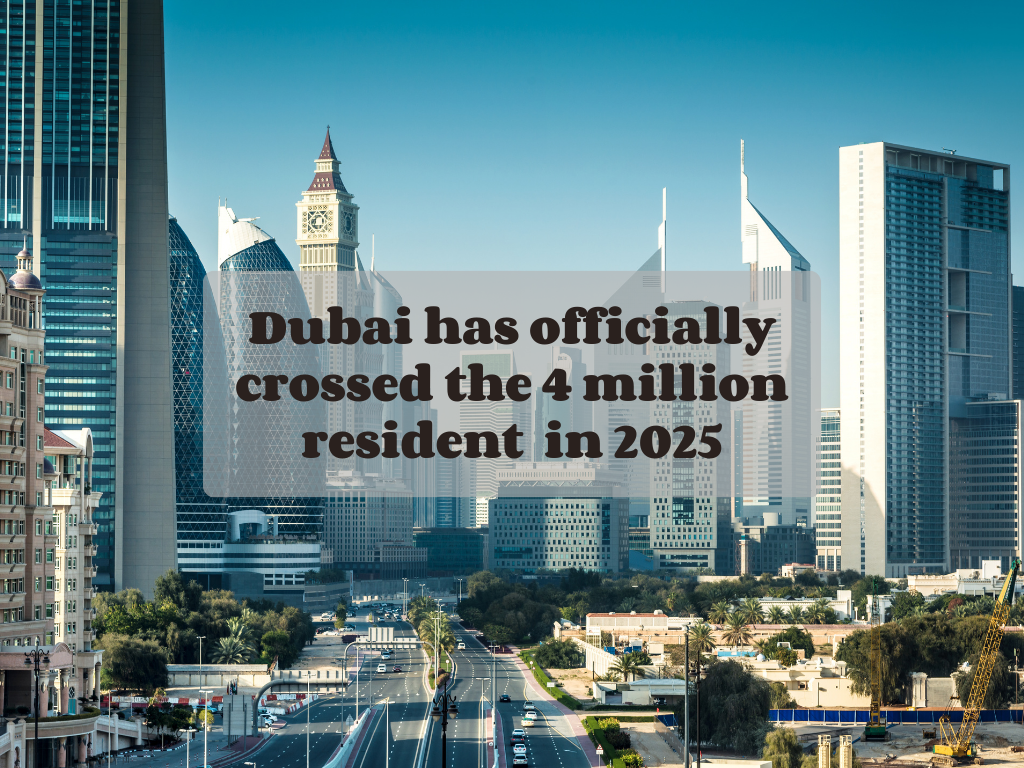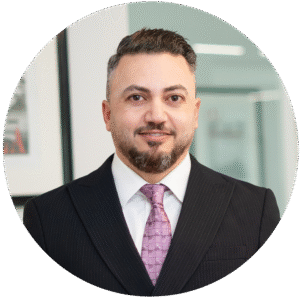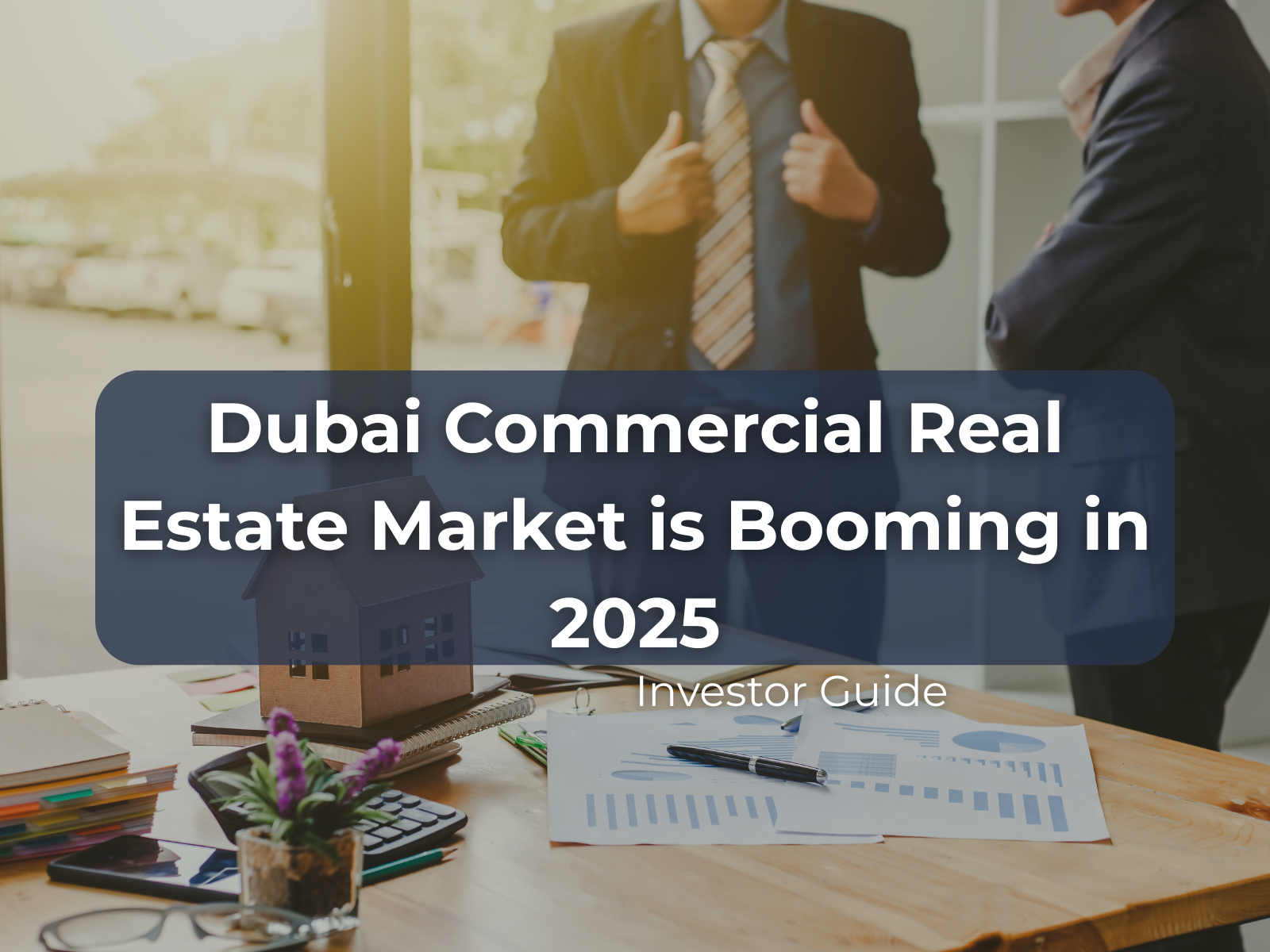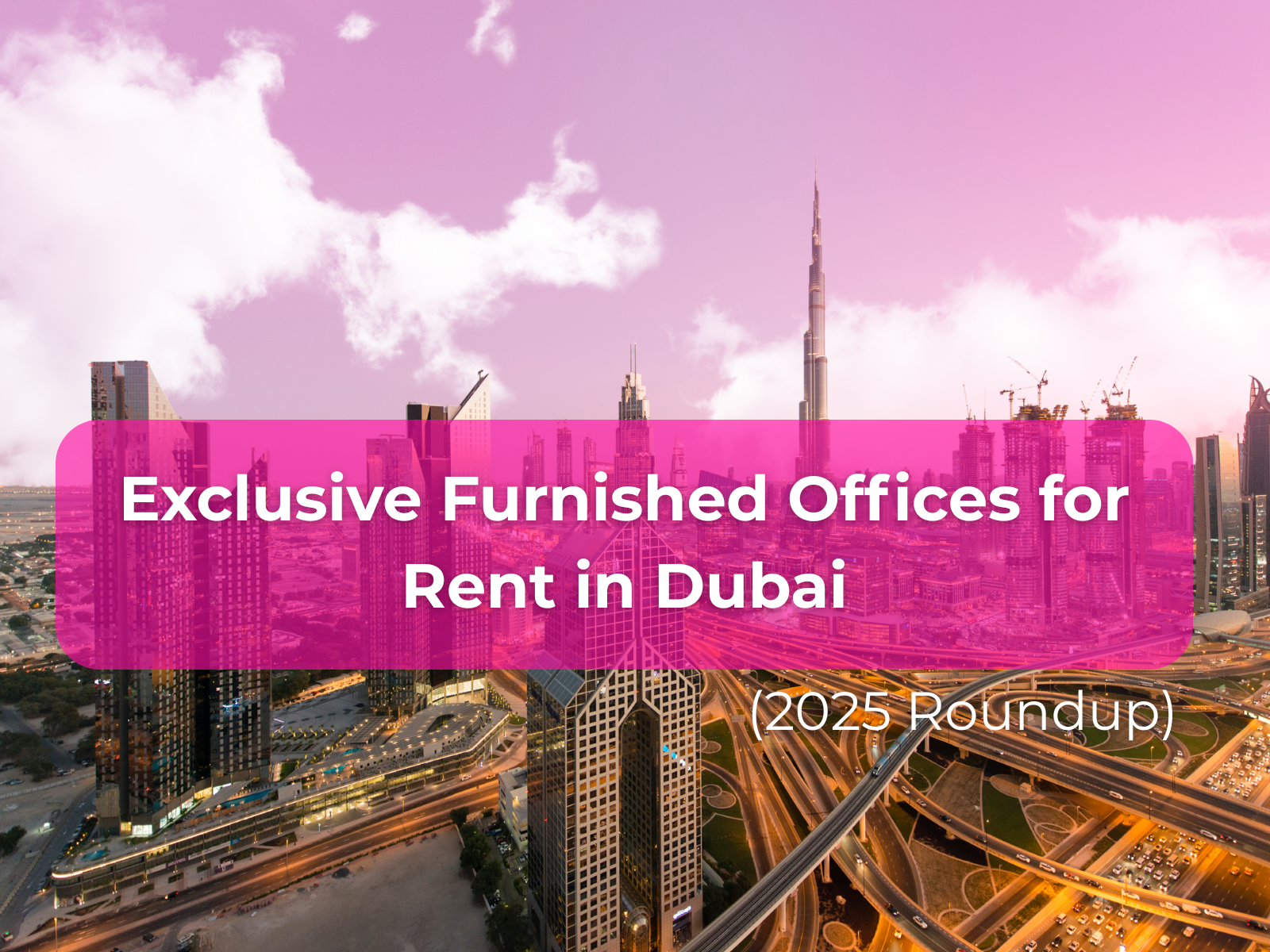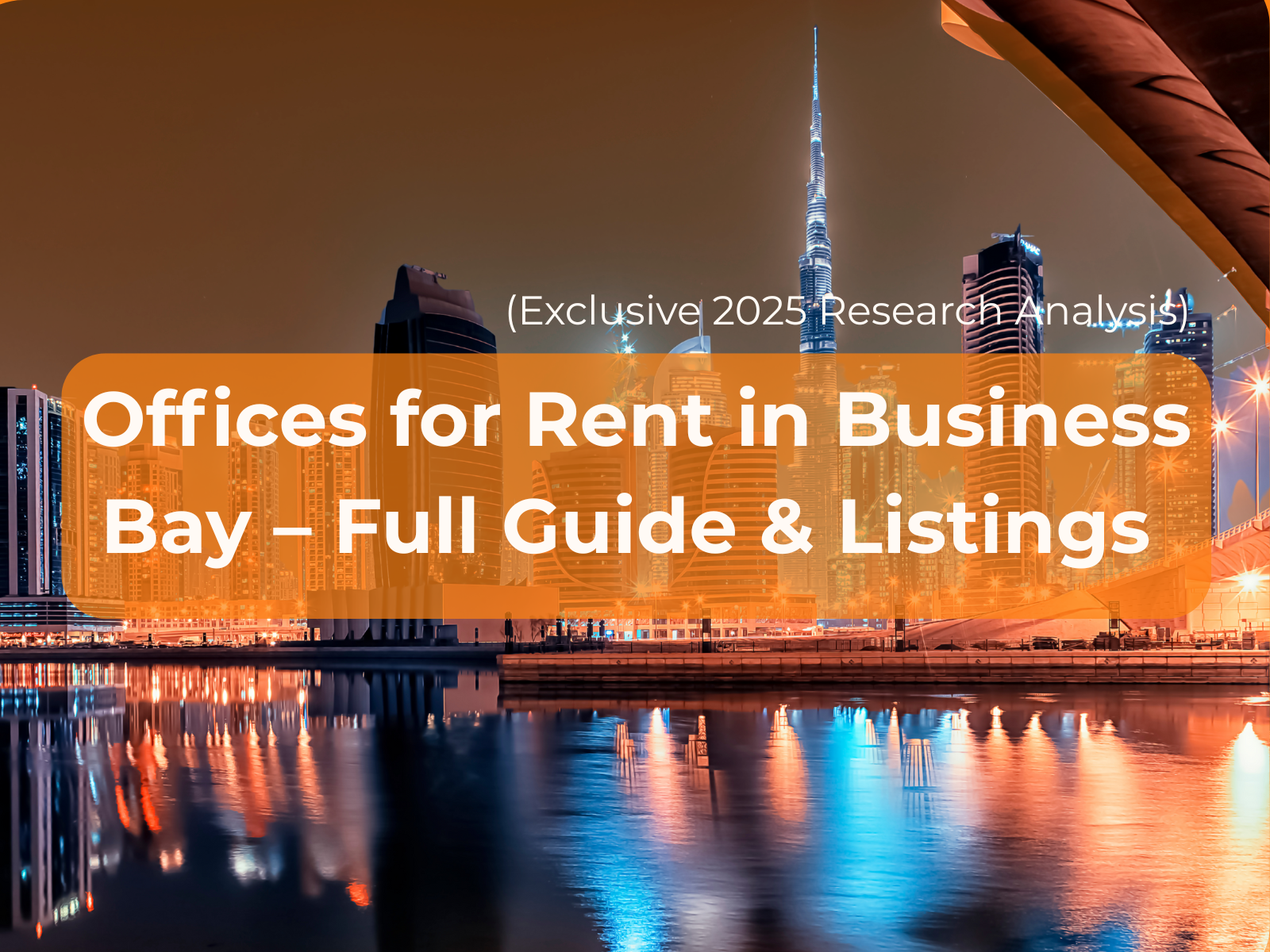By Mazen Alzoubi, Commercial Consultant — DubaiOfficeFinder.com
Dubai has officially crossed the 4.0 million resident threshold in 2025, adding 231,000 people in the last 12 months—roughly 6.13% year‑over‑year growth. Step back to 2008 and the scale becomes clear: the city has more than doubled from 1.6 million to today, a net gain of 2.4 million residents. Population surges of this magnitude don’t just move the housing market; they rewire the operating environment for every category of commercial real estate in Dubai—from Grade‑A office towers to warehousing, retail, clinics, schools, and the coworking/flex ecosystem that connects it all.
“Dubai has officially crossed the 4 million resident threshold in 2025” → Dubai Statistics Center
This growth is a pivotal moment for the future of Commercial Real Estate in Dubai, as demand for various types of properties increases.
As a commercial consultant, I read the tea leaves through one lens: How does this growth translate into demand, risk, pricing power, and strategy for landlords, occupiers, and investors? Below is a practical, data‑anchored view of what’s next.
The Numbers Behind the Momentum
Population expansion (select milestones):
- 2008: 1.6M
- 2011: 2.0M
- 2016: 2.6M
- 2017: 2.88M (+10.36%—record annual jump)
- 2019: 3.3M
- 2021: 3.44M (pandemic slowdown)
- 2025: 4.0M (+231K in one year)
AI-assisted projections suggest Dubai could surpass 5 million residents by 2029” → GMI Research
Real estate ecosystem today:
- 2,061 developers delivering across the emirate
- 29,353 agents
- 8,789 brokerages
That’s a strikingly competitive—but rapidly professionalizing—market structure. It sets the tone for how office leasing, project launches, and asset management will evolve.
Forward view (population): AI‑assisted projections suggest:
- 2026: ~4.22M
- 2027: ~4.46M
- 2028: ~4.72M
- 2029: ~4.95M
- 2030: ~5.15M
Golden Visa, 100% foreign ownership, and specialized free zones” → Golden Visa UAE
Understanding the shifts in population dynamics will inform investment in Commercial Real Estate in Dubai.
In short, Dubai could surpass 5 million residents by 2029, with 2030 still on a 5.15M path. Residential supply will have to keep up: baseline household‑formation models imply ~340,000 additional units this cycle, but once you account for multi‑property investors, second‑home ownership, a 9% vacancy buffer, and replacement allowance, the adjusted need rises toward ~500,000 units between 2025–2030. (You’ll also see simpler rules‑of‑thumb citing 300,000+ new units by the time we cross 5 million residents; think of that as a minimum, with the ~500k figure more reflective of investment‑driven reality.)
Why does a residential figure matter in a commercial piece? Because people equal customers, staff, founders, and service needs. When population and capital inflows accelerate, commercial real estate in Dubai becomes the operational backbone of that growth.
“Dubai 2040 Master Plan” → link Dubai 2040 Urban Master Plan
What This Means for Commercial Real Estate in Dubai
1) Office: From “place to sit” to “tool for talent”
- Talent magnet, HQ appeal. Dubai’s long‑term visa reforms and 100% foreign ownership in many sectors continue to attract entrepreneurs, family offices, and multinational regional hubs. That exerts steady pressure on Grade‑A and prime‑free‑zone locations where governance, prestige, and connectivity drive decision‑making (think DIFC, Business Bay, JLT, Dubai Internet City, Dubai Media City, and Dubai Design District).
- Flex remains strategic—not just a stopgap. The post‑pandemic rebound in 2023–2025 consolidated flex and hybrid policies. Expect corporates to combine core leased space with on‑demand flex for project teams and short‑cycle expansions.
- Flight to quality. In every growing city, new supply tends to be better located, more energy‑efficient, and tech‑forward. As tenants upgrade for ESG, wellness, and efficiency, B‑grade assets risk softening unless they’re repositioned (lobbies, MEP, lifts, amenities, and digital infrastructure).
Leasing tip: If you’re planning a 2026–2027 move, explore pre‑lets or secure expansion rights early. The best floors in the best towers are spoken for well before handover.
That’s why insights into Commercial Real Estate in Dubai are vital for long-term planning.
These factors directly impact the strategies employed in Commercial Real Estate in Dubai.
2) Industrial & logistics: E‑commerce, cold chain, and Dubai South
- Population growth = consumption growth. More residents mean more last‑mile nodes, dark stores, and temperature‑controlled facilities (FMCG, pharma, F&B).
- Dubai South and logistics corridors remain pivotal as the city stretches outward. Expect strong demand for well‑spec’d Grade‑A warehouses with clear heights, modern loading, yard depth, and compliance for food/pharma.
- Automation readiness. Landlords who spec higher floor loads, EV‑ready infrastructure, and rooftop solar create real differentiation for 5‑ to 10‑year leases.
Leasing tip: For occupiers, bake power availability and permits timeline into your shortlist—these two factors can make or break go‑live dates.
The evolution of the market will reshape Commercial Real Estate in Dubai.
To support growth, the demand for quality Commercial Real Estate in Dubai will increase.
3) Retail & F&B: Experience‑led formats win
- Density supports deal flow. As household counts rise and high‑net‑worth migration continues, malls and open‑air destinations that curate experience‑heavy F&B and leisure maintain pricing power.
- Neighborhood retail benefits from new communities and the “15‑minute city” trend within master‑planned areas.
- Health, beauty, clinics, and education are steady absorbents of high‑visibility ground‑floor and podium units.
Leasing tip: Evaluate day‑part footfall and ingress/egress as closely as rent and key money. In strong nodes, the sales uplift can justify higher base rents and turnover clauses.
Market Structure: Growth with Consolidation
The market today counts 2,061 developers, 29,353 agents, and 8,789 brokerages—a sign of breadth, but also fragmentation. Over the next cycle, larger firms and AI‑led platforms will take share. Expect:
- Developer landscape: Numbers may grow toward 3,000–3,200 by 2030, but competitive pressure and regulation will thin the tail of smaller players.
- Brokerage/agency: Headcount could exceed 45,000 by 2027 before stabilizing to 35,000–40,000 active agents by 2030, with larger brokerages consolidating market share thanks to data, compliance, and brand.
- AI everywhere. From deal sourcing to underwriting to tenant‑rep search, AI will compress search costs and make pricing and availability more transparent. The winners will be those who combine data with service—not data alone.
For the office market, the evolution of Commercial Real Estate in Dubai is crucial.
As the city’s population grows, the implications for Commercial Real Estate in Dubai become even more significant.
For landlords, that means professionalized leasing ops, faster lead qualification, and more informed negotiations. For occupiers, it means better comparables, clearer trade‑offs, and less time lost to inaccurate listings.
This trend reinforces the importance of understanding the dynamics of Commercial Real Estate in Dubai.
Risk & Return Signals to Watch
- Residential yields sit around 6–7% on average, with 8–9% in select submarkets. While those are residential figures, they signal robust investor appetite and liquidity—factors that spill over into the commercial stack through development finance and mixed‑use schemes.
- Rental growth moderation post‑2026. As new supply lands, expect a cooler rental growth trajectory, not an abrupt slowdown. For commercial, this generally translates into more choice and tighter spreads between asking and achieved—especially outside the very best assets.
- Off‑plan dominance. Off‑plan exceeded 60% of transactions recently, with total sales values topping AED 522B in 2024. For commercial stakeholders, this underscores the pipeline confidence and the city’s capacity to execute large‑scale projects.
How Occupiers Should Plan (2025–2030)
This shift indicates that the future of Commercial Real Estate in Dubai is being shaped by these trends.
- Location strategy before rent math. Decide early between mainland vs free zone (and which one), factoring license requirements, banking, and talent draw.
- Design for density and hybrid. Fit‑outs that support 1.0–1.2 seats per person (for hybrid teams) reduce long‑term costs.
- Lock optionality. Where possible, negotiate rights of first refusal on adjacent space, early renewal windows, and flex blocks to de‑risk headcount uncertainty.
- ESG and operating costs. Energy‑efficient buildings with smart BMS often deliver lower total occupancy cost even at a slightly higher base rent.
- Timeline discipline. Backcast your project plan from move‑in, including fit‑out approvals, IT commissioning, and license steps—the unglamorous pieces that delay go‑lives.
How Landlords Can Outperform
- Reposition B‑grade stock. Target the “big 5” upgrades: arrival experience, vertical transport, washrooms, common‑area lighting, and digital infrastructure.
- Amenity curation > empty amenities. Activated ground floors (grab‑and‑go F&B, pharmacy, clinic, micro‑gym) improve capture rates for tours.
- Data‑literate leasing. Adopt AI‑assisted lead scoring, pipeline dashboards, and real‑time availability to cut days‑on‑market.
- Speculative suites. Move‑in‑ready floors (30–60 workstation modules) convert faster, particularly for international entrants testing the market.
- Sustainability as a win‑win. Rooftop solar, EV chargers, and water‑saving retrofits are increasingly tenant‑selective factors and can be capitalized into value.
Scenario Planning: Putting 5 Million Residents to Work
Crossing 5 million residents as early as 2029 isn’t just a headline; it’s a capacity question. Housing needs may approach ~500,000 units this cycle after adjusting for investor behavior. To support that, the city will require:
- More Grade‑A offices for banks, asset managers, tech, and professional services.
- A deeper flex network to absorb short‑term and project‑based teams.
- Expanded logistics and light‑industrial for e‑commerce, F&B, and pharma.
- Community‑scale retail and social infrastructure in emerging corridors (Dubai South, Dubai Creek Harbour, Palm Jebel Ali and adjacent catchments).
The next phase is consolidation, not infinite expansion. The firms that thrive will pair balance‑sheet strength with data‑driven execution—and assets that feel good to work in.
Quick FAQ (for readers finding this via search)
Investments in Commercial Real Estate in Dubai will be driven by these consumer preferences.
Is now a good time to lease office space in Dubai?
If you need quality space in a prime location, the answer is usually yes—especially if you can secure expansion rights and incentives in 2025–2026 before broader supply moderates rental growth.
Which districts are best for regional HQs?
For financial and professional services, DIFC is the reference point. Business Bay, JLT, Dubai Internet/Media City, and D3 suit a wide range of tech, media, design, and services firms. Dubai South anchors large‑format industrial/logistics.
Mainland or free zone?
It depends on licensing, shareholder structure, and operational scope. Decide this first; it determines your shortlist of legal addresses and speeds up your go‑live.
How do I future‑proof my lease?
Negotiate break/renewal options, growth rights, and fit‑out flexibility. Target buildings with strong ESG credentials and digital infrastructure to reduce opex over the term.
Final Take
Dubai’s population journey—from 1.6M in 2008 to 4.0M in 2025—speaks to more than demographics. It’s a story of policy, capital, and ambition converging into a technology‑enabled marketplace. AI‑assisted forecasts put the city on a trajectory to ~5.15M residents by 2030, with 5M potentially crossed in 2029. Residential demand will stay elevated (plan on 300k–500k additional units depending on how you model investors), and the commercial real estate in Dubai that powers this growth will reward those who plan early, select locations strategically, and insist on buildings that people actually want to be in.
If you’re evaluating your next move—lease, expand, consolidate, or invest—I’m happy to help you map the options and negotiate from a position of strength.
Dubai Land Department data highlights 2,061 developers, 29,353 agents, 8,789 brokerages” → Dubai Land Department
— Mazen Alzoubi
Commercial Consultant, DubaiOfficeFinder.com
Looking for office space or a tailored market brief?
Visit DubaiOfficeFinder.com and let’s start with your requirements.
Repositioning strategies will be critical for the success of Commercial Real Estate in Dubai.
Such innovations are essential for attracting tenants in the Commercial Real Estate in Dubai landscape.
This strategic vision is essential for the future of Commercial Real Estate in Dubai.
Those involved in Commercial Real Estate in Dubai must stay attuned to these developments.
Importantly, the future of Commercial Real Estate in Dubai is bright, provided stakeholders adapt.
The right timing can maximize opportunities in Commercial Real Estate in Dubai.
Proper planning for future needs in Commercial Real Estate in Dubai is crucial.
The evolution of the workforce necessitates a fresh look at Commercial Real Estate in Dubai.
For those seeking space, the dynamics of Commercial Real Estate in Dubai are evolving rapidly.
To leverage these trends, understanding the market for Commercial Real Estate in Dubai is essential.

